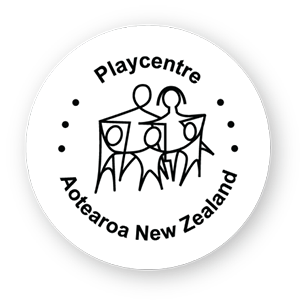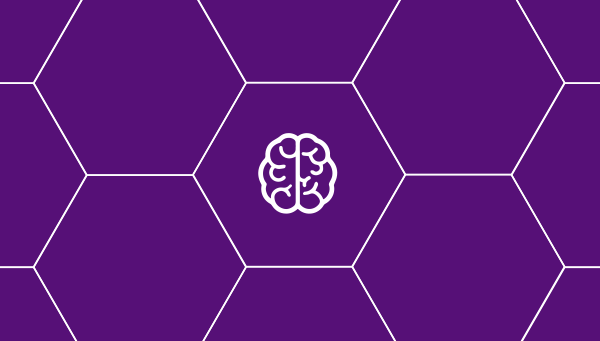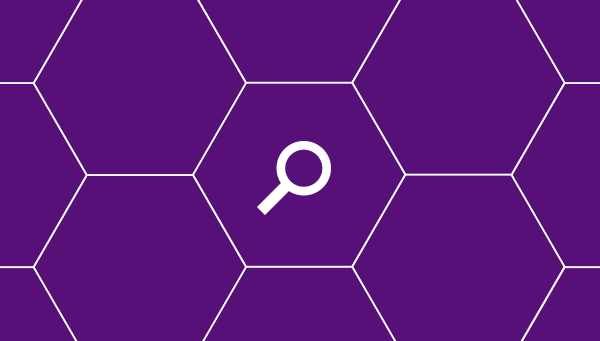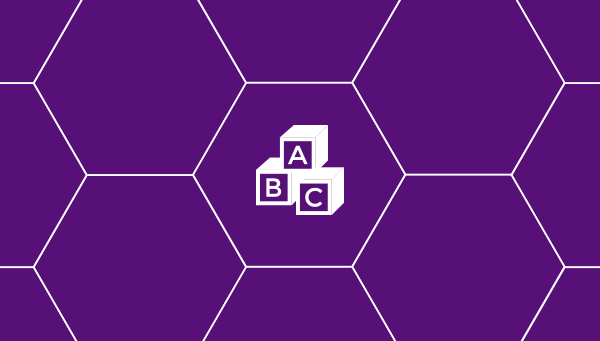Written by: Sue Younger, MA(Hons), MCW (Hons), DipTchg, DipProfEth, Trustee
te ahurei o te tamaiti arahia ō tatou māhi.
Let the uniqueness of the child guide our work.
From the moment they are conceived until about the end of their third year of life, humans grow faster than they will ever grow again, developing from a few microscopic cells into the delightful, walking, talking, climbing, challenging, empathetic bundles of personality that are three-year-olds.
What makes tamariki turn out the way they do? How are they able to learn so much so quickly? Why do they react in their own ways? Genes play an essential part.
For babies and tamariki, their early interactions with the world, working with their genes, lay the foundations for their lives.
So too does the environment of the womb they are nurtured in. And, of course, the world they are born into, especially their relationships with others.
Individuals, whānau, iwi, communities, services and governments play a critical role. While genes provide essential potential, there is much evidence that early experiences, both positive and negative, can have life-long consequences for health and well-being. For babies and tamariki, their early interactions with the world, working with their genes, lay the foundations for their lives.
Much of this is related to the development of their brain at a microscopic level.
The brain & body are connected
While different regions of the brain have varied functions, they are extremely inter-connected. Naming different parts as ‘responsible’ for something is always over-simplifying. In turn, the brain is intricately linked to the immune system, the gut, the heart, the blood, the muscles, the bones and there is a constant ‘backwards and forwards’ flow of information and learning from one organ, or system, to another.
The brain constantly reads, interprets and influences what is happening within the tinana (body) and in the world around us, throughout our lives. Understanding some of the ways early brain development occurs gives us insight into the lifelong effects of early experiences.
Importantly, the infant brain is enormously ‘plastic’ – that is, able to learn, adapt and change. Although we continue to learn throughout our lives, this ability gets less with age.
Brain development pre-birth
Beginning just days after conception, brain development before birth forms a critical foundation for later learning. While in utero babies grow the majority of the neurons, or nerve cells, they will ever have.1 These multiply at an astonishing rate, differentiate into different types of cells for specific parts of the brain, form into ‘structures ‘and begun to ‘connect up.’ All this in just 7-9 months! During this pre-birth period, factors such as Mum’s health, her nutrition, and the support she has, interact with genes to shape the rapid development of the brain.2
Brain development after birth
Babies are born with brains that, though tiny, are organised very much like adult brains. Newborns are well wired for ‘survival’. The most ‘developed’ area of their brain is the brainstem, at the bottom. They can breathe, the organs in their body are usually fully formed and working, they can cry for what they want, and they can suck and digest milk for food. But they still need adults in order to survive. Very soon they learn to smile and to chuckle, and to charm some adults completely.
As babies look around, hear sounds, feel things on their skin, taste things and move their body in space, their brain grows and changes rapidly. More and more they are able to take clues from the world around, and these clues become increasingly powerful in shaping who they become. In turn, who it is they are becoming helps shape their experiences and the way others react to them. Are they curious? Are they funny? Are they empathetic?
Most of the growth and development of the brain after birth is not about forming new neurons, or nerve cells, which has almost all happened in utero. It is more about forming crucial connections between those neurons. Synapses, which allow the brain cells to ‘connect’ and communicate with each other, form rapidly. Networks of connection that will last their entire life form for different functions. This is driven by both genes and experiences.
While different regions of the brain have varied functions, they are extremely inter-connected
As the brain continues to grow rapidly, there is also a cascade of growth of other brain cells – usually known as glia – that are not neurons. Sometimes called ‘caretaker’ cells, they carry out a variety of tasks that support and strengthen the neurons. Glia are multiplying enormously after birth, as well as differentiating and maturing.3 They are very important in the way the brain will function.
With different sensory input, the brain develops differently.4 A powerful influence on this growth and connecting up in these early years is the gentle touching, smell and language of those who love, nurture and protect them. Caregivers and whānau influence both the types of experiences babies have, and the way in which they understand and react to those experiences.
Timing Matters
By one year the brain is 2.5 times the weight it was at birth and by the age of two it is 3 times the birth weight and roughly 80% of the adult weight.5 Although brain weight is but a very raw measure of how the brain is functioning, nevertheless this growth is striking.
It’s important to remember, though, that while a two-year old’s brain is around 80% of the weight of an adult brain, it is not functioning at 80% of an adult’s brain.6 While they are amazing at learning to talk and run, it would be wrong to try to teach them to drive, for example. There is a lot of brain change to come. Some of it is about making their brains more efficient.
Thus, the process of both growth and development tends to follow patterns over time. Learning builds on the skills they have already built.
Take physical movement. We watch as pēpi learns to support their own head, rolls, sits, crawls, walks with help and then walks unsupported. Whānau provide space, safety and opportunity for all this to happen and it usually happens in order and within a general time frame.
Babies need adults.
A very similar process is occurring less visibly in many areas of the brain including, importantly, the way the individual learns to react to stress, to regulate their own behaviour, and to relate to others.
At first, babies rely on adults to soothe and calm them down, to feed them when they are hungry, and put them to bed when they are tired. Gradually, they learn to soothe themselves and to cope with stress in their own ways.
Relationships with others are very important, for self-regulation and for many other things. The networks for relationships begin forming very early indeed. It’s a two way street – babies both influence, and learn from, the relationships they have with those around them.7
Just think about the experience of swimming in the sea. A tamaiti can be delighted by the ocean, and cooled by it. If Dad, or others who love the child, are nearby, holding him when he is a baby, standing near him when he is a toddler and watching him from the shore as he grows older, he will learn usually to stand up, to swim, to delight, to balance, to marvel. It is ok if he falls occasionally, or suddenly gulps salt water, and cries.
If Mum is there to pick him up, cuddle him, laugh with him at the surprise he got, he is likely to try again. She learns to understand which challenges her child is ready for, responds to the way her child is reacting to the water and reassures them if they are frightened. And every child will be different in the way they react.
But if a child wanders into the ocean, and no-one is watching or supporting her, even a little current, or a tiny wave is likely to swamp or knock her over. Her risk of being overwhelmed with fear and stress is high. She will have no understanding of why this ‘stuff’ (water) is so terrifying, although she will probably learn that it is to be feared. She may take great persuasion to ever try again.
In this way, the support of caregivers helps pēpi and tamariki to learn about the world, safely in a positive way and at about the time they are ready.
Some skills even have a set period of time when they can be learned, and sometimes this can close if a baby does not get the sensory experiences they need. Thus babies who suffer early neglect may struggle to ‘catch up’ or fully develop their potential.
Generally those connections that are most used are strengthened, and those used less often are pruned away.
Trial and Error
One thing that makes humans enormously adaptable is that there is a lot of room for ‘trial and error’. Many, many connections are formed, and only some of them are strengthened and made more efficient. All the way through there is a process of over-production and then ‘pruning’ of the connections, and this is the principal way the brain is developed and shaped in the early years. Thus not every negative or positive experience is critical on its own.
Generally those connections that are most used are strengthened, and those used less often are pruned away.8 This is where repetition comes in. Children need to do things over and over again, in order to develop, strengthen and preserve their neural networks of connections. Tamariki seem to know this; whether it’s repeatedly dropping objects onto the floor or asking for the same bedtime story for many nights in a row. Think how practise makes us better at riding a bike, or learning a language. Tamariki are practising everything. Play is one major way of doing this.
All children will have both negative and positive experiences at different times. But it is the experiences they have over and over again that most influence which connections are pruned and which are kept. This teaches them about the world.
If their experiences are mostly positive, and if they are well supported through their negative experiences, this might help them to ‘trust’ the world and lessen their stress. However, if the world is often overwhelming and frightening, and they are without adult support, they may form a different brain. While they could be excellent at ‘surviving’ under stress, this could come at the cost of learning other skills, and potentially also at the cost of ‘flourishing’. ‘Surviving’ and ‘flourishing’ are two very different outcomes.9
Conclusion
A lovely phrase we use at Brainwave is that early brain development is ‘experience made flesh’. This captures the idea that experience can actually physically change the structure and the organization of the brain. This is the way we get the brain we need to suit the very different worlds that we all live in.10 It’s an incredibly adaptable system.
Glossary of Māori terms
pēpi – baby
tamariki – children
tamaiti – child
tinana – body
whānau – extended family
1. Webb et al., 2001
2. Monk et al., 2019
3. Stiles & Jernigan, 2010
4. Stiles & Jernigan, 2010
5. Dekaban & Sadowsky, 1978
6. Levitt and Eagleson, 2018
7. Parsons et al., 2010
8. Levitt & Eagleson, 2018
9. Moore et al., 2017
References
Dekaban, A. S., & Sadowsky, D. (1978). Changes in brain weights during the span of human life: relation of brain weights to body heights and body weights. Annals of Neurology, 4(4), 345-356.
Levitt, P., & Eagleson, K. L. (2018). The ingredients of healthy brain and child development. Washington University Journal of Law & Policy, 57, 75-88.
Monk, C., Lugo-Candelas, C., & Trumpff, C. (2019). Prenatal developmental origins of future psychopathology: Mechanisms and pathways. Annual Review of Clinical Psychology, 15, 317-344. doi:10.1146/annurev-clinpsy-050718-095539
Moore, K., Bethell, C., Murphey, D., Martin, M., & Beltz, M. (2017). Flourishing from the start: What is it and how can it be measured. Retrieved from Bethesda, MD: https://childtrends.org/
Parsons, C. E., Young, K. S., Murray, L., Stein, A., & Kringelbach, M. L. (2010). The functional neuranatomy of the evolving parent-infant relationship. Progress in Neurobiology, 91(3), 220 – 241.
Stiles, J., & Jernigan, T. L. (2010). The basics of brain development. Neuropsychology Review, 20(4), 327-348.
Webb, S. J., Monk, C. S., & Nelson, C. A. (2001). Mechanisms of postnatal neurobiological development: implications for human development. Developmental Neuropsychology, 19(2), 147-171.




